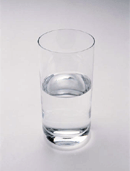    
|
 |
 |
  |
|
 |
| This science module is about heat and its
effects on space flight. If you are using Genesis science
modules for the first time, read the User's
Guide thoroughly before you begin. (View User's Guide
as a PDF.)
The Portable Document Format (PDF) is used
to distribute fully formatted, print-quality
documents electronically. The following information
is available to view and print as a PDF file
with Adobe's Acrobat reader. To install the
FREE Adobe Acrobat Reader, visit the Adobe
Web site.
Take a look at other science
modules available. All technical terms
in the science modules are compiled in the Glossary for
easy access. 
Technology
Applications are available for this module.
|
|
|
|
|
|
Adobe's
Acrobat Reader©

The
Portable Document Format (PDF) is used to distribute
fully formatted, print-quality documents. |
|
|
|
| |
|
|
|
|
|
|
|
|
|
|
|
|
 |
|
|
|
|
 |
| Use the text material, "The Invisible
Power of Heat" to create student interest in learning more
about thermodynamics. The text starts with students reading the
myth of Daedalus and Icarus, emphasizing their technological challenge.
It then draws a parallel with the challenge of designing the Genesis
spacecraft to prevent damage caused by heat. |
|
 |
Curriculum
Connections
National Standards Addressed
National
Science Education Standards
Grades 5-8
Science as Inquiry |
- Understandings about scientific inquiry
- Abilities necessary to do scientific Inquiry
|
Physical Science |
- Properties and changes of properties in matter
- Transfer of Energy
|
| Science and Technology |
- Understandings about Science and Technology
- Abilities of Technological Design
|
Science in
Personal and Social Perspectives
|
- Risks and benefits
- Science and technology in society
|
History and
Nature of Science
|
- Science as a Human Endeavor
- Nature of Science
- History of Science
|
Grades 9-12
Science as Inquiry |
- Understandings about scientific inquiry
- Abilities necessary to do scientific Inquiry
|
Physical Science |
- Conservation of evergy and the increase in disorder
- Interactions of Energy and Matter
|
| Science and Technology |
- Understandings about Science and Technology
- Abilities of Technological Design
|
Science in
Personal and Social Perspectives
|
- Natural and human-induced hazards
- Science and technology in local, national, and global
challenges
|
History and
Nature of Science
|
- Science as a Human Endeavor
- Nature of Scientific Knowledge
- Historical Perspectives
|
| |
|
|
|
|
|
|
|
|
|
|
|
 Use
the activity, "What We Know About Heat" to generate
student discussion, leading them to examine some of their
basic assumptions. This activity offers the teacher a
snapshot of the class's present level of understanding
and background knowledge. A series of activities follows.
It is up to the discretion of the teacher to determine
which activities are useful as review or as initial instruction
about certain underlying concepts. The activities described
in this module include: Use
the activity, "What We Know About Heat" to generate
student discussion, leading them to examine some of their
basic assumptions. This activity offers the teacher a
snapshot of the class's present level of understanding
and background knowledge. A series of activities follows.
It is up to the discretion of the teacher to determine
which activities are useful as review or as initial instruction
about certain underlying concepts. The activities described
in this module include: |
- "Atoms and Molecules in Motion"—a simulation
activity that demonstrates the concept of heat as energy of
molecular motion.
- "Expansion and Contraction"—a series of
teacher demonstrations and short activities investigating the
expansion of materials when heat is added.
- "Thermometers and Thermostats"—a series
of teacher demonstrations and short activities showing the
basic procedures for using a thermometer and how a thermostat
works.
- "Heat Effects on Metals"—a more advanced
activity dealing with the heat capacity of metals.
|
|
|
|
|
 |
|
|
|
|
 |
During this more formal encounter,
the student conducts experiments, makes observations, and reads
and discusses text. The student must record data, conduct analyses,
and interpret relationships between evidence and decision-making.
Teachers may introduce technical scientific vocabulary here.
Use the activities in "Three Methods of Heat Transfer" to
review or teach conduction, convection, and radiation, and
review the laws of thermodynamics. The student text, "Heat
and Thermodynamics" introduces basic concepts of heat
transfer, and includes discussion of the three laws of thermodynamics.
Students explore the thermal properties of various materials
further in a series of "Activities with Insulators and
Conductors".  They
then read the student text, "Insulators and Conductors:
The Coefficient of Conductivity." They
then read the student text, "Insulators and Conductors:
The Coefficient of Conductivity."
The student text, "Heat Shields as Insulators" introduces
the concept of thermal protection from frictional heating.
|
|
|
|
|
 |
|
| | |
 |
Students interact with peers in
order to accomplish many of the tasks in the sections above.
However, in the activity, "Protecting the Genesis Spacecraft
from Heat," synthesis is thoroughly accomplished through
using prior learning to create something new and different.
"Protecting the Genesis Spacecraft
from Heat" is a student activity that evaluates the
effectiveness of insulating materials in the design of the
spacecraft. Students will build a heat transfer model from
which they draw conclusions through observation and experimentation. |
|
|
|
|
 |
|
|
| |
 |
The final "Survival!" activity
assesses students abilities to make and justify decisions, test
and modify designs, select mediums of communication for specified
audiences, and craft and deliver those messages.
In the final "Survival!" activity,
students design a method for communicating an accurate description
of their product, the results of their tests of its efficiency,
and their conclusions about its usefulness to an appropriate
audience.
|
|
|
|
|
 |
|
|
|
|
 |
|
|
|
|
|
|
| |
|
 |
|
| |
|
|
| Writers: |
~Greg
Rawls, McRE
~Marty Henry, McREL
~Alice Krueger, McREL
|
| Contributing Writers: |
~Carla Jacobs, Coleman
Middle School, Wichita, KS
~Matt Kuhn, Littleton Academy, Littleton, CO
|
|
| Graphics: |
~Judy Counley, McREL
|
| Layout: |
~Amy Hoza, McREL
|
| Special thanks to the following reviewers: |
~Dr. Gil Yanow, Jet Propulsion Laboratory
~Dr. Virgil Mireles, Jet Propulsion Laboratory
~Dr. Donna Bogner
|
|
|
|
|
|
|
|
|
|
|
|
|
|
|
|
